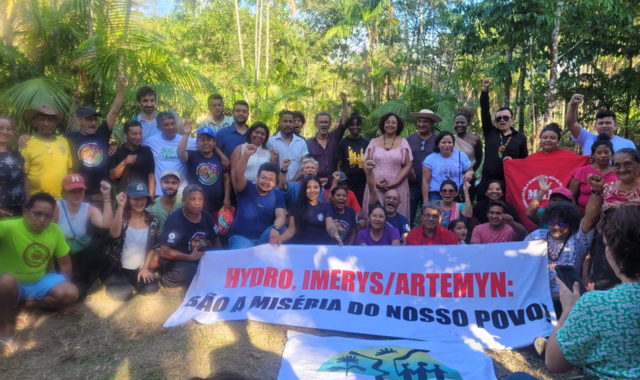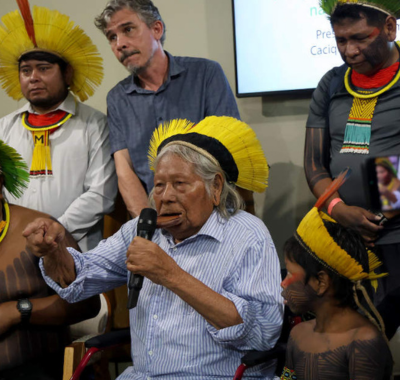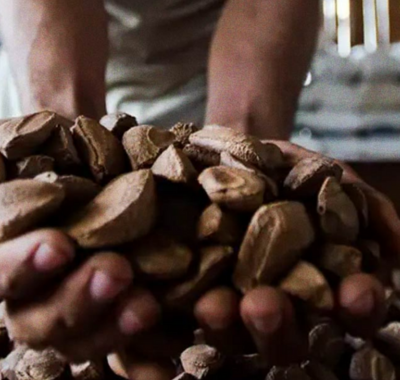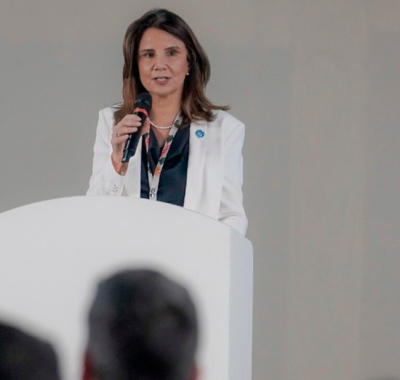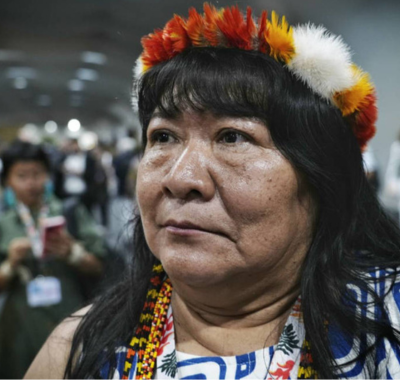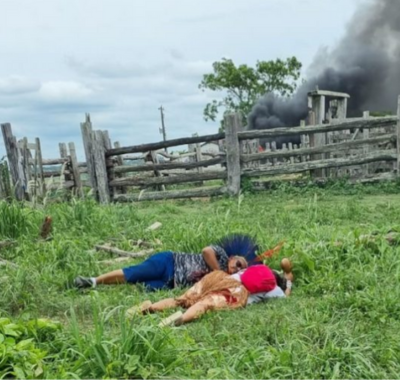People’s Tribunal will try environmental crimes perpetrated by corporations; Hydro Alunorte and Imerys Artemyn will be in the dock during COP30
Author: Liana Melo
The residents of Barcarena live in a territory of constant resistance. An important mining hub in Pará, the city – about 120 kilometers from Belém, the host city of COP30 – is home to 94 companies, including many multinational mining corporations responsible for approximately 30 environmental crimes perpetrated between 2000 and 2025.
Two of them – Norway-based Norsk Hydro, which controls Alunorte and produces bauxite, and France’s Imerys, sold to the US-based Artemyn, which produces kaolin – will be tried during the Climate Conference at the People’s Tribunal against Ecocide. The symbolic trial is scheduled for this Thursday (November 13th) at the Federal University of Pará (UFPA), located in the vicinity of the Blue Zone, where the COP30 negotiators are headquartered.
The pollution caused by the mining companies disrupts the daily lives of hundreds of residents in the neighborhood. Day after day, Cleise Rabelo wakes up and the furniture in her house is covered in white powder. Even after washing, the family’s white clothes always turn yellowish. Drinking water has a strange taste, reminiscent of aluminum.
Rabelo is a resident of the Quilombola, Indigenous and Agro-extractive Community of the Tauá river, a rural area of Barcarena. The municipality with almost 140,000 inhabitants is a victim of the impacts resulting from bauxite processing by Hydro in the surrounding territory.
Clouds of soot, toxic smoke, overflowing waste, and contaminated water are some of the crimes that will be tried by the 11 popular judges gathered at the People’s Tribunal against Ecocide, which will hear 21 cases of socio-environmental violence.
Sacrifice zone
Barcarena, whose wide river beaches are also frequented by the population of Belém and tourists, was once a typical Brazilian town. Today, it is at the epicenter of a dispute over water, air, and land. Forced displacements were reported to members of Study and Research Group on “Society, Territory and Resistances in the Amazon” (Gesterra) at UFPA.
The changes began to occur between the 1960s and 1980s, during the Brazilian military dictatorship, when the government decided to add the Amazon to the route of large-scale development projects.
Albrás/Alunorte – currently Hydro/Alunorte – began its operation in Barcarena in the 1980s, initially on 40,000 hectares. The occupation marked the beginning of the transformation of the territory into an industrial area or, as its residents prefer to call it, a “sacrifice zone.”
Imerys’s facilities cover 100 hectares with production capacity of 1.6 million tons per year. Since kaolin processing generates a large amount of waste, it requires the construction of new deposits.
“The investigation reveals that the environmental disasters in Barcarena are not mere accidents but rather an expression of the very logic behind the development model imposed on the region,” says João Gomes, head the Federation of Social and Educational Assistance Organizations (FASE) Amazon in Belém.
A mountain of waste in Barcarena
At the invitation of FASE, the #Colabora journalism team participated in the “Toxic Tour Barcarena – Territories Resisting to Mining,” which took place last Saturday (November 8th), one day after the end of the Leaders’ Summit, which preceded the start of COP30.
The delegation included researchers, representatives of civil society organizations, such as the Movement of People Affected by Mining (MAM), and community leaders.
The companies were not intimidated by the group. Carlos Espindola, a community leader from the Tauá river area, was even approached while showing Hydro’s tailings dam. A police car followed the convoy on practically all routes. “We are good fighters, and we’ve been struggling against this multinational for nine years,” said Espindola, who is used to being intimidated.
It was a full-day visit to the two traditional communities: Tauá, where Rabelo and Espindola live, and Curuperé, a territory marked by abundant water resources where residents depend on water trucks because Imerys/Artemyn, responsible for processing kaolin, has contaminated rivers and streams with heavy metals.
Due to Hydro/Alunorte’s high production volumes, the company, which has two large solid waste deposits, has already caused four leaks. At the time, in 2003, a highly toxic red sludge spread through the city streets. Other accidents followed in 2009 and 2018 – the latter received significant national attention.
Crime beyond borders
As France sanctioned the Duty of Vigilance Law in 2017, under which French companies are to be held accountable for human rights crimes and environmental damage within and outside the country, the NGO French Catholic Committee – Terre Solidaire (CCFD) is studying appropriate measures to accuse Imerys in France.
“The communities are constantly fighting for the recognition of their territories, for the right to reparation for damages caused by contamination, and for their right to water,” says Marco Apolo, a legal advisor to the community and president of the Pará Society for the Defense of Human Rights.
Invisible until now, the territories affected by mining companies in Barcarena will take advantage of COP30 to denounce the involvement of the state of Pará in the crimes committed, especially by Hydro.
A survey conducted by FASE found that the company holds at least 15 mining permits granted by the State Environment, Climate and Sustainability Department (SEMAS) for using 18.5 billion liters of water per year, which is equivalent to 2.5 times the consumption of the population of Barcarena.
Imerys, which according to FASE is responsible for a long history of kaolin waste spills into the city’s rivers, holds 14 mining permits, totaling 3.3 billion liters of water per year.
—
This report was produced by #Colabora, through the Collaborative Socio-environmental Coverage of COP 30. Read the original report at: https://projetocolabora.com.br/ods13/barcarena-territorio-em-disputa-com-mineradoras/?amp=1

